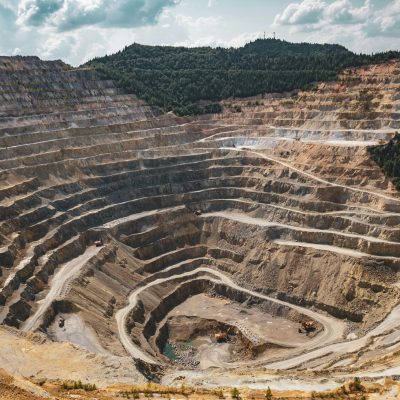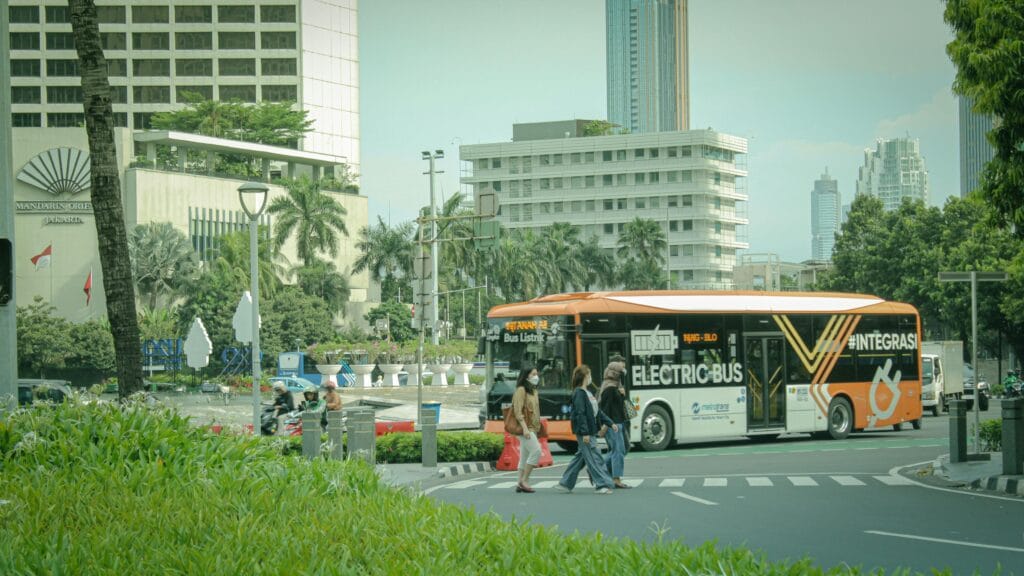Materials, natural resources and circular economy
Humanity’s growing appetite for natural resources is pushing Earth’s systems to their limits, driving both environmental collapse and deepening social inequality.
How does resource use affect climate and biodiversity?
Extracting and processing materials is a major driver of climate change, biodiversity loss, pollution, and waste. According to the Global Resources Outlook 2024, resource extraction and processing is responsible for over half of greenhouse gas emissions, and 90% of land use-related biodiversity loss.
And resource use keeps growing: since 1970, natural resource extraction has tripled. The weight of concrete, steel, plastic and all other materials produced by humans surpassed the weight of all living biomass on the planet.
To achieve the five extraordinary turnarounds needed for a fair and sustainable future for all within the planetary boundaries, we must address and curtail the growing demand for materials and transition from a linear to a circular economy. This will also mean meeting human needs in radically different ways to how we do so today.

Why do we need to reduce resource use?
Lewis Akenji, director of the Hot or Cool Institute and member of the Earth4All Transformational Economics Commission, explains why we urgently need to tackle resource use now. He says that reducing consumption isn’t enough: we need to take a systemic approach and redesign systems of both production and consumption so that sustainability is the default option.
What is a circular economy?
The circular economy is a system designed to minimise waste and make the most of resources by keeping materials in use for as long as possible. Unlike the traditional “take-make-dispose” model, a circular economy focuses on product life extension, reuse and renovation, and recycling of materials. One overriding objective is to design products to reduce their environmental impact.
However, a circular economy is only part of the solution to the resource challenge. It will not be enough to make resource use more efficient and to clean up the supply of resources – we must also address the root causes of excessive resource demand.
Learn more in A circular economy isn’t enough – we also need to consume less by Anders Wijkman and Janez Potočnik.
Certain aspects of the circular economy concept have become prominent in recent years, but the emphasis needs to move away from increasing recycling rates to reducing extraction and consumption. Shein, for example, promised in 2022 to reduce supply chain emissions by 25% by 2030, through greater energy efficiency, encouraging its manufacturers to use renewables, and incorporating more recycled materials into its clothes. Yet whether it will reduce the enormous amount of clothes and waste it produces is less clear.
Anders Wijkman & Janez Potočnik, International Resource Panel and Earth4All contributors
How can we reduce demand for resources while achieving wellbeing for all?
To reduce resource demand without compromising quality of life, we need to rethink how we meet our human needs. Do we all need a car – or do we need an efficient way to get to work and meet our friends?
We can redesign key “provisioning systems” like transport, housing, and food to be more efficient and less wasteful. This includes prioritising public transport and shared mobility over private car ownership, using sustainable materials like timber instead of concrete, and promoting sustainable diets while doing away with unnecessary food waste.
The goal of such provisioning systems would be to meet human needs and achieve wellbeing and prosperity within planetary boundaries – not endless production and consumption for the sake of economic growth. The aim is to decouple increasing wellbeing from resource extraction and its damaging impacts.
Transforming mobility

“Let’s take mobility in cities as an example. Instead of focusing on replacing every internal combustion engine with electric vehicles (EVs), mobility needs examining more broadly.
Cleaner vehicles are part of the solution, but equally important are compact cities offering the services people need close to where they live; safe cycling and walking options; frequent and reliable public transport; and pooled mobility. Mobility as a service stands out as a most appropriate solution, notably in cities. Likewise, EVs should be made in the most circular way possible – both with regard to the car bodies and the batteries – to minimise resource use.
Such systemic optimisation would save significant amounts of steel and other materials, large amounts of energy and reduce air pollution.”
Anders Wijkman and Janez Potočnik, “Why systemic change is essential for a sustainable future”
Blogs
Follow the latest opinion pieces on natural resources and circular economy from Earth4All contributors in our blog.
Learn more
Resource use: deep-dive paper
Read the Earth4All deep-dive paper on resources: “From “greening” the present system to real transformation – transforming resource use for human wellbeing and planetary stability”
Global Resources Outlook 2024
Download the International Resource Panel’s flagship report on global resource use for in-depth data and insight on sustainable resource consumption and production.
Proposal for a Global Minerals Trust
How can we safeguard the critical minerals needed for the green transition? A new proposal sets out how a Global Minerals Trust could ensure fair and sustainable access to these resources.



